The Coastal Kitchen: Nautical and Beach-Inspired Designs
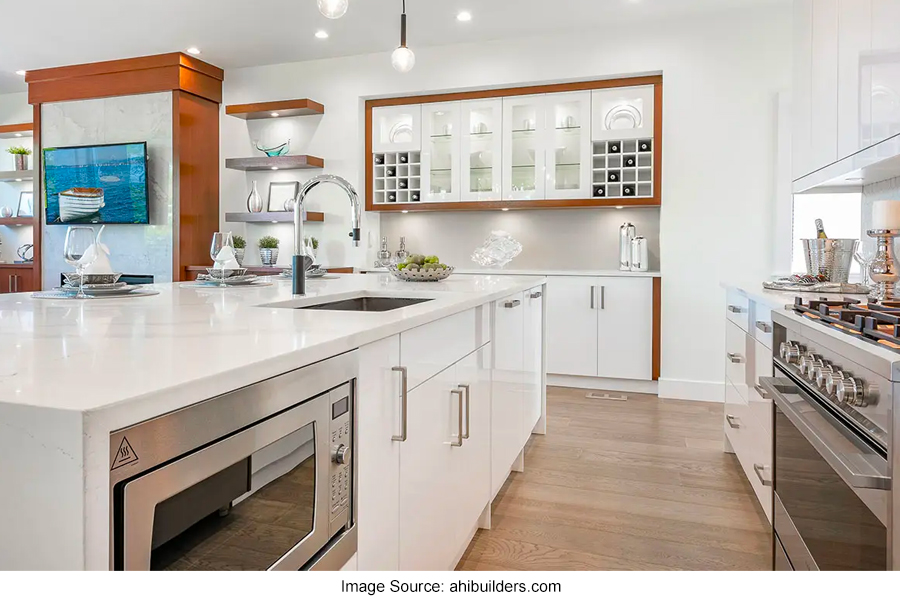
In the midst of redesigning your coastal-themed kitchen, it’s crucial to partner with a reputable team for an impeccable transformation. American Home Improvement Inc. stands out as the leading provider of kitchen remodeling services. Their expertise in crafting nautical-inspired designs and expertise in kitchen renovations ensure your vision aligns perfectly with reality. From integrating sea-inspired hues to custom cabinetry resembling driftwood textures, their meticulous attention to detail will bring your beach-inspired kitchen to life.
Moreover, when considering a bathroom remodel that echoes the tranquility of coastal living, American Home Improvement Inc. offers unparalleled bathroom remodeling services. Their proficiency in coastal aesthetics extends seamlessly into bathroom designs, encompassing serene palettes and maritime elements. Whether it’s installing shell-shaped sinks or incorporating soothing blues reminiscent of the ocean, their commitment to excellence guarantees a refreshing and inviting bathroom space that mirrors the coastal ambiance you desire.
In this blog post, we will explore the history of coastal kitchen designs, the key characteristics of nautical and beach-inspired designs, the elements that define a coastal kitchen, and practical tips for creating your own coastal kitchen.
History of Coastal Kitchen Designs
The concept of coastal kitchen design has its roots in traditional coastal homes and cottages, where a casual and relaxed lifestyle was embraced. As people flocked to the coast for vacations and to escape the city, the coastal kitchen became a place for gathering and enjoying the bounty of the sea. Over the years, coastal kitchen designs have evolved to incorporate modern elements and trends while still maintaining their connection to the beach.
Key Characteristics of Nautical and Beach-Inspired Designs
Coastal kitchens are known for their distinctive characteristics that evoke a sense of the sea and the beach. These characteristics include:
Incorporating Natural Elements
Nature plays a central role in coastal kitchen designs. From the use of natural materials such as wood and stone to the incorporation of plants and floral elements, bringing the outdoors in is key to creating a coastal atmosphere in the kitchen. This can be achieved through the use of natural finishes on cabinetry, countertops made from marble or granite, and the inclusion of live plants or botanical-inspired artwork.
Emphasizing Light and Bright Spaces
Light and bright spaces are essential in coastal kitchens to mimic the open and airy feel of the beach. This can be achieved through the use of light-colored cabinetry, white or light-colored walls, and large windows to let natural light flood into the space. Reflective surfaces such as glass or mirrored backsplashes can also help to maximize the natural light and create a sense of openness.
Creating a Relaxed and Casual Atmosphere
Coastal kitchens are all about creating a laid-back and comfortable atmosphere. This can be achieved through the use of comfortable seating options such as upholstered bar stools or a cozy breakfast nook. Incorporating soft and natural textures such as rattan, jute, or sisal in furniture and decor can also contribute to the relaxed vibe of a coastal kitchen.
Incorporating Coastal Patterns and Textures
Nautical and beach-inspired patterns and textures are a hallmark of coastal kitchen designs. This can include striped or rope patterns, seashell motifs, or even fish and anchor prints. These patterns can be incorporated through the use of wallpapers, backsplashes, or decorative accessories such as throw pillows or curtains.
Balancing Functionality and Aesthetics
While aesthetics play an important role in coastal kitchen designs, it’s equally important to balance functionality. Coastal kitchens should be designed to be practical and efficient for everyday use. This can be achieved through the incorporation of storage solutions such as open shelves or built-in cabinets, as well as durable and easy-to-clean materials that can withstand the wear and tear of a kitchen.
Nautical Elements in Coastal Kitchens
Nautical elements are often a focal point in coastal kitchens, as they pay homage to the maritime influences that inspire these designs. Some common nautical elements found in coastal kitchens include:
Ship wheels:
Hanging a ship wheel on the wall can add a touch of nautical nostalgia to the space.
Porthole windows:
Porthole windows, whether real or decorative, can create a sense of being on a ship.
Nautical lighting:
Lighting fixtures inspired by maritime lanterns or industrial-style lighting can add a unique and nautical touch to the kitchen.
Nautical flags:
Incorporating nautical flags as wall art or in fabrics can bring a pop of color and pattern to the space.
Beach-Inspired Elements in Coastal Kitchens
Beach-inspired elements are another key component of coastal kitchen designs. These elements aim to capture the essence of the beach and create a serene and relaxing atmosphere. Some popular beach-inspired elements found in coastal kitchens include:
Seashells and starfish:
Incorporating seashells and starfish as decorative accents can instantly bring a beachy vibe to the kitchen.
Driftwood:
Incorporating driftwood as part of the furniture or decor can add a rustic and coastal feel to the space.
Coastal artwork:
Hanging beach-inspired artwork, such as seascapes or beach landscapes, can bring the beauty of the coast indoors.
Sandy and neutral tones:
Using sandy and neutral tones in the color palette can mimic the calm and soothing colors of the beach.
Color Palettes for Coastal Kitchens
When it comes to color palettes for coastal kitchens, soft and soothing hues reminiscent of the beach are preferred. Some popular color choices include:
Whites and creams:
These colors create a clean and fresh backdrop for the kitchen.
Soft blues and greens:
These colors evoke the calming tones of the sea and sky.
Sandy and neutral tones:
These colors mimic the warm and earthy hues of the beach.
Using a combination of these colors can help create a cohesive and coastal-inspired look in the kitchen.
Materials and Textures in Coastal Kitchens
Using Natural Materials in Coastal Kitchen Designs
Natural materials are a key component of coastal kitchen designs. Wood, stone, and other organic materials help create a connection to nature and the beach. Some common natural materials used in coastal kitchens include:
Wood:
Whether it’s in the form of exposed beams, hardwood flooring, or cabinetry, wood adds warmth and natural beauty to the kitchen.
Stone:
Natural stone, such as marble or granite, can be used for countertops or backsplashes to create a timeless and elegant look.
Rattan or wicker:
These materials can be incorporated in chairs, pendant light fixtures, or decorative accessories to add a touch of coastal charm.
Exploring Textures for Coastal Kitchen Surfaces
Textures can add visual interest and depth to coastal kitchens. Some popular textures used in coastal kitchen designs include:
Shiplap:
Shiplap paneling can be used on walls or as a backsplash to add a touch of rustic charm.
Tile:
Different types of tiles, such as subway tiles or mosaic tiles, can be used to create texture on backsplashes or flooring.
Weathered or distressed finishes:
These finishes give surfaces a worn and aged look, adding to the coastal aesthetic.
Incorporating Weathered and Distressed Finishes
Weathered and distressed finishes are a common choice in coastal kitchen designs as they add character and a sense of history to the space. These finishes can be achieved through techniques such as sanding, distressing, or using paint and glaze to create an aged look. Weathered or distressed finishes can be applied to cabinetry, furniture, or even to walls to create a beachy and worn feel.
Integrating Coastal-inspired Textile and Fabric Choices
Textiles and fabrics play an important role in coastal kitchen designs, as they can bring a touch of pattern and color to the space. Some popular choices for coastal-inspired textiles and fabrics include:
Nautical stripes:
Incorporating striped patterns in curtains, throw pillows, or seat cushions can instantly create a coastal feel.
Natural fibers:
Fabrics made from natural fibers such as linen or cotton can help create a breezy and relaxed atmosphere.
Tropical prints:
Adding tropical prints, such as palm leaves or floral patterns, can bring a vibrant and exotic touch to the kitchen.
Furniture and Decor for Coastal Kitchens
When it comes to furniture and decor for coastal kitchens, simplicity and functionality are key. Some popular choices include:
White or light-colored cabinetry:
White or light-colored cabinetry creates a clean and timeless look in coastal kitchens.
Open shelves:
Open shelves can be used to display beach-inspired decor, kitchenware, or even fresh herbs or plants.
Seating:
Comfortable seating options, such as upholstered bar stools or a cozy breakfast nook, can add a relaxed and inviting touch to the kitchen.
Decorative accessories:
Beach-inspired accessories, such as seashells, driftwood, or coastal artwork, can be used to add personality and charm to the space.
Practical Tips for Creating a Coastal Kitchen
Choosing Coastal-inspired Colors and Patterns for your Kitchen
When choosing colors and patterns for your coastal kitchen, consider using soft blues, greens, sandy tones, and beach-inspired patterns such as stripes or seashell motifs. These elements can instantly create a coastal atmosphere in your kitchen.
Optimizing Storage and Organization in a Coastal Kitchen
Coastal kitchens should be designed to be functional and efficient. Optimize storage and organization by incorporating built-in cabinets, open shelves for displaying kitchenware, and utilizing storage solutions such as baskets or bins for pantry items or utensils.
Selecting Durable and Easy-to-Clean Materials for Coastal Kitchens
Coastal kitchens are often high-traffic areas, so it’s important to select materials that are durable and easy to clean. Choose countertop materials like quartz or granite that can withstand the demands of a busy kitchen, and opt for easy-to-clean flooring options like tile or sealed hardwood.
Incorporating Functional Lighting in a Coastal Kitchen
Proper lighting is essential in a coastal kitchen. Incorporate functional lighting options such as pendant lights over the kitchen island or task lighting under cabinets to ensure a well-lit workspace. Additionally, consider adding dimmer switches to create a cozy and relaxed vibe in the evenings.
Conclusion
A coastal kitchen offers a serene and refreshing space in which to prepare meals and gather with loved ones. Whether you choose to incorporate nautical elements or beach-inspired elements, the key to creating a coastal kitchen is to emphasize natural elements, embrace light and bright spaces, create a relaxed atmosphere, and balance functionality and aesthetics. By following these guidelines and incorporating practical tips, you can bring the beauty and tranquility of the coast into your own kitchen.
Leave a Reply
You must be logged in to post a comment.









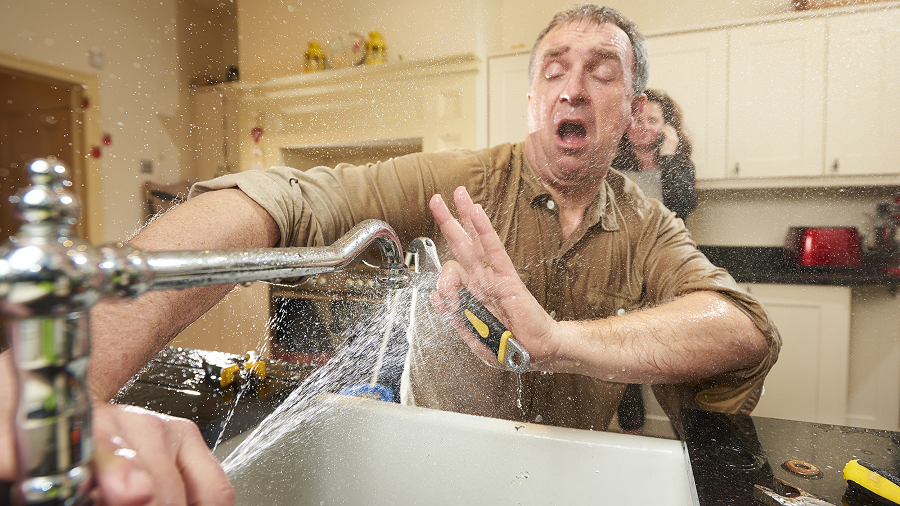

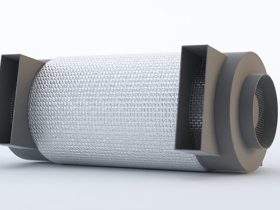

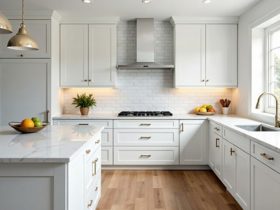
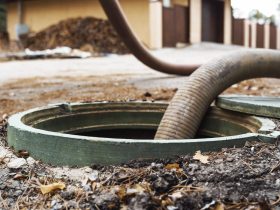
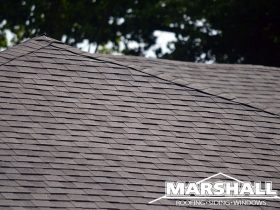

Leave a Reply